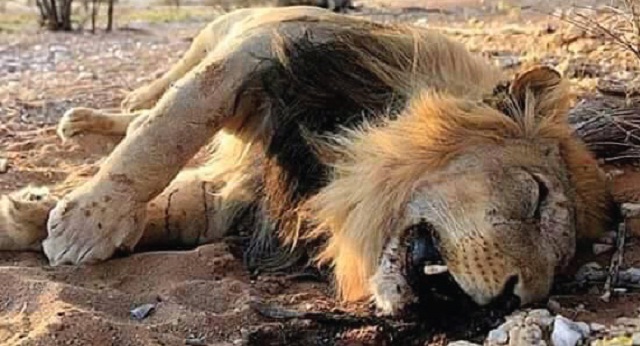
But pressure over resources remains between people and beasts in national park
Kampala, Uganda | RONALD MUSOKE | The war between man and animal has erupted again, as it often does, in Queen Elizabeth National Park in western Uganda. The recent pile of 11 lion carcasses discovered by park rangers in the world bio-sphere reserve are shocking and the humans; mainly conservationists, are in tears.
Poisoning is suspected and, in a place where animal-on-animal brutality is expected and normal— such as the case of April 17 where a lion in the same park lost a battle and died— the likelihood of a human hand in the killing of the lions has devastated animal lovers.
“I broke down and I started crying.”
That is how Alex Braczkowski reacted to the news of the massacre. He told National Geographic that he had, for weeks, followed this pride, filmed it, and become emotionally attached to it.
Braczkowski had been filming in Queen Elizabeth National Park (QENP) for a television show focusing on conservation and featuring their habit of climbing and hanging out in tree branches.
Braczkowski told National Geographic that four other lions died by poisoning last year in the same park. He said if killings go on at the present rate, the park will be devoid of lions in five years. He was thousands of miles away, in the U.S. city of Las Vegas; preparing for a photography convention, when he heard the news.
Although most lions do not climb trees; some of the lions in QENP have the gift of tree-climbing. This odd behaviour has drawn visitors to the park eager to watch big cat acrobatics.
Geoffrey Baluku, a tourism consultant told The Independent on April 19 that the death of the 11 lions is a “national disaster.”
Jimmy Kisembo, a conservationist who works as a lead ranger and lion monitor for the Uganda Wildlife Authority—the national agency in charge of protection of Uganda’s wildlife— and his team found the remains of the dead lions near Hamukungu fishing village on the northern fringes of the park in Kasese district. Hamukungu is one of four landing sites on Lake George.
Kisembo described how all the members of his team cried on seeing the carcasses which had already been devoured by the hyenas. Tourists and the Uganda Wildlife Authority (UWA) rangers had last seen these lions alive on the Easter weekend of March 31 and April 01.
However, grimmer apprehension mounted when days later, the rangers spotted another pride; of two adult lionesses and seven cubs, near the same village. What will be their fate?
David Duli, the executive director of the World Wildlife Fund for Nature-Uganda pointed out that the death of the lions came just weeks after they marked World Wildlife Day on March 3 in the same Kasese District.
 The Independent Uganda: You get the Truth we Pay the Price
The Independent Uganda: You get the Truth we Pay the Price



If UWA could compensate every damage within 6 days, there could be no conflict between man and beast. The UWA wants to eat a cake and still have it. All revenue from tourism in the park should be used to maintain the park and to pay for damages done by wildlife. Failure to pay for losses incurred means the farmer is left with no other option except to revenge.
In conclusion, these cats were killed by government.